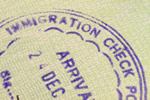A Guide To New Zealand Schools
 A Guide To New Zealand Schools
A Guide To New Zealand Schools
The system is divided into government-funded state schools and independent schools, which are also state-funded to around 25 per cent of their operating costs. Geographic zones are used in state-funded schools to determine pupil intake, although a few places are kept for non-geographic zone applicants.
Independent schools accept paying pupils from across the country as well as from their immediate location, and also open their doors to international students.
In general, education is compulsory between the ages of five or six and 16, and is provided free at state-funded schools. In addition, many New Zealand parents send their children to pre-school classes at nursery level, some starting as early as two years old. New Zealand students from both independent and state-funded schools are often awarded scholarships to further education institutes in and outside the country, and most independent schools prepare pupils for the International Baccalaureate examination.
A larger proportion of schools here are single-sex than in, say the UK, particularly in the independent sector, which also provides boarding facilities for those whose parents either live or work abroad. The gap between the academic achievements of pupils in state schools and those in private education is smaller than in many other countries. Even so, the achievement levels in state schools depend on their location within the community, with less good results in poorer or mainly ethnic areas.
New Zealand's academic year tends to vary between institutions, but mostly begins in January, with four terms ending in mid-December. Universities begin their year in late February and end in mid-November. In general, fees for international students are higher than for New Zealand nationals or permanently resident migrants, although Australian citizens are also classed as domestic students.
Students living more the five kilometres from a school and having no public or private transportation to the campus may be excepted from attending formal education, but are mostly required to enrol in correspondence courses running parallel to the state education syllabus.


